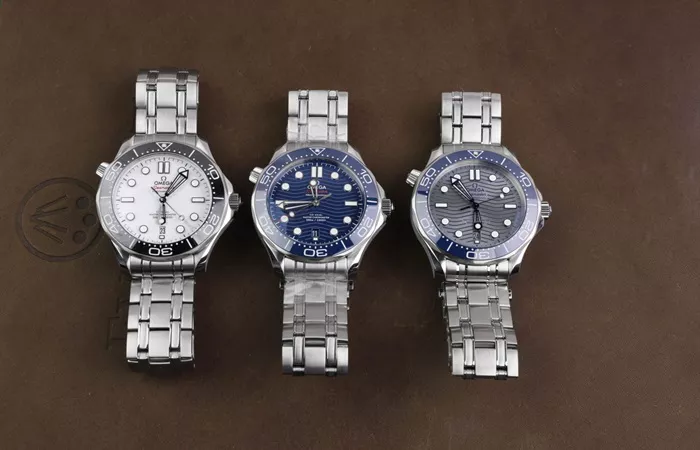The Omega watch brand is synonymous with luxury, precision, and innovation. For over a century, Omega has been crafting timepieces that are admired worldwide for their exceptional quality and timeless design. Whether you’ve inherited an Omega watch from a family member, purchased one at a pawn shop, or found it at a garage sale, knowing if your Omega is authentic can be crucial. In this guide, we’ll explore various methods to determine the authenticity of your Omega watch, ensuring you can confidently wear or sell it with peace of mind.
Understanding Omega’s Legacy and Brand Markers
Omega’s rich history dates back to 1848 when Louis Brandt founded his watchmaking company in La Chaux-de-Fonds, Switzerland. Over the decades, Omega has been a leader in watchmaking technology, earning numerous accolades and being the official timekeeper for various Olympic Games, space missions, and other prestigious events. Authentic Omega watches are hallmarked by their exceptional craftsmanship, precise movements, and signature features that set them apart from replicas.
To begin assessing the authenticity of your Omega, familiarize yourself with the brand’s hallmarks and unique characteristics. Authentic Omega watches typically come with a serial number etched on the case, a logo etched on the crown, and distinctive Omega branding on the dial, bracelet, and movement. Additionally, Omega watches have a specific weight and feel, which can vary significantly from replicas. By understanding these foundational elements, you’ll have a strong foundation for further examination.
Inspecting the Dial and Case
The dial and case of your Omega watch are crucial indicators of authenticity. Start by examining the dial closely. Authentic Omega dials are crafted with precision and attention to detail. The Omega logo should be clearly etched and perfectly centered. The hands and hour markers should be evenly spaced and aligned. Check for any imperfections, such as misalignments, smudges, or faded printing, which can be signs of a replica.
Next, inspect the case. Authentic Omega cases are made from high-quality materials, such as stainless steel, gold, or platinum. The case should have a smooth, polished finish with no visible scratches or blemishes. Look for the Omega logo etched on the caseback, along with the serial number and model number. Authentic Omega cases also have a distinct weight and feel, which can help you distinguish them from lighter, cheaper replicas.
Analyzing the Movement and Bracelet
The movement and bracelet of your Omega watch are other key areas to examine. Authentic Omega watches feature high-quality movements that are engineered for precision and durability. If you have an Omega with a transparent caseback, you can observe the movement inside. Authentic Omega movements are beautifully crafted with intricate details and should have the Omega logo etched on them.
If your Omega does not have a transparent caseback, you can still analyze the movement by removing the caseback (if possible). However, be cautious when doing so, as improper handling can damage the watch. Authentic Omega movements are made from high-quality materials and have a smooth, polished finish. They should also operate smoothly and quietly without any unusual sounds or movements.
The bracelet of your Omega watch is another area to scrutinize. Authentic Omega bracelets are crafted from high-quality materials, such as stainless steel or gold, and have a sturdy, secure feel. The Omega logo should be etched on the bracelet clasps and links. Check for any imperfections, such as loose links, bent clasps, or faded logos, which can be signs of a replica.
Verifying the Serial Number and Paperwork
The serial number is one of the most reliable ways to verify the authenticity of your Omega watch. Each Omega watch has a unique serial number etched on the caseback or inside the case. You can use this serial number to check Omega’s database or contact the company directly to verify its authenticity.
In addition to the serial number, authentic Omega watches come with a suite of paperwork, including a certificate of authenticity, warranty card, and instruction booklet. These documents should be in pristine condition and contain accurate information about your watch, such as the model number, serial number, and purchase date. Be wary of watches that come with incomplete or fake paperwork, as they may be replicas.
Considering Professional Authentication Services
If you’re still unsure about the authenticity of your Omega watch, consider seeking professional authentication services. There are numerous watch experts and authentication services that specialize in verifying the authenticity of luxury watches. These professionals have extensive knowledge and experience in identifying authentic Omega watches and can provide you with a definitive answer.
When choosing an authentication service, ensure they have a good reputation and are recognized in the watch industry. Look for services that offer detailed reports and certifications, and be prepared to pay a fee for their expertise. While professional authentication services can be costly, they provide peace of mind and ensure you can confidently wear or sell your Omega watch.
Conclusion
Owning an Omega watch is a testament to your appreciation for luxury, precision, and innovation. However, ensuring your Omega is authentic is crucial to maintaining its value and preserving its legacy. By understanding Omega’s rich history, inspecting the dial and case, analyzing the movement and bracelet, verifying the serial number and paperwork, and considering professional authentication services, you can confidently determine the authenticity of your Omega watch. Remember, authentic Omega watches are crafted with precision and attention to detail, and they should feel and look like a true work of art. With this knowledge, you can enjoy your Omega watch with pride and appreciation for its exceptional quality and timeless design
Related Topic:

